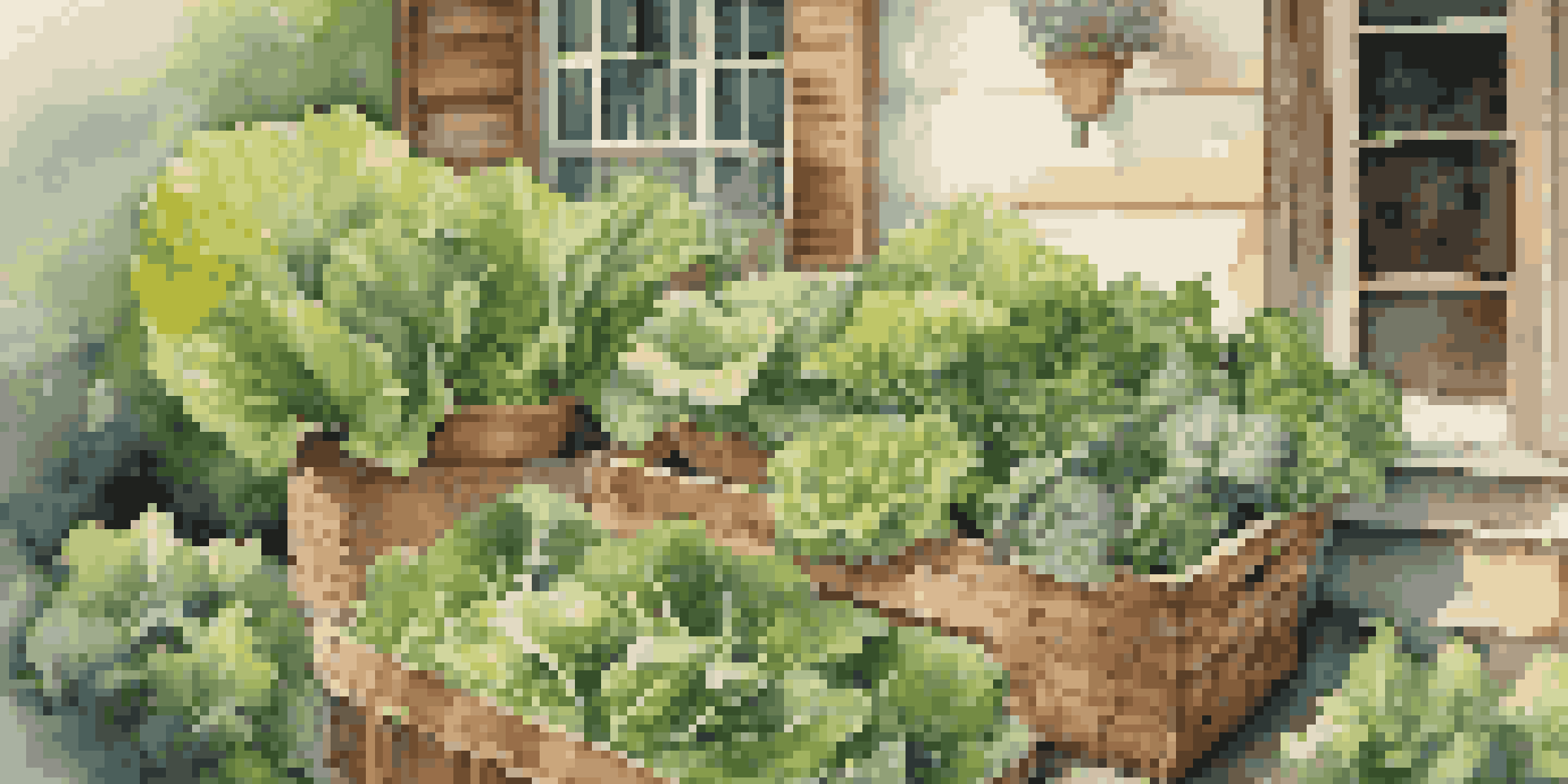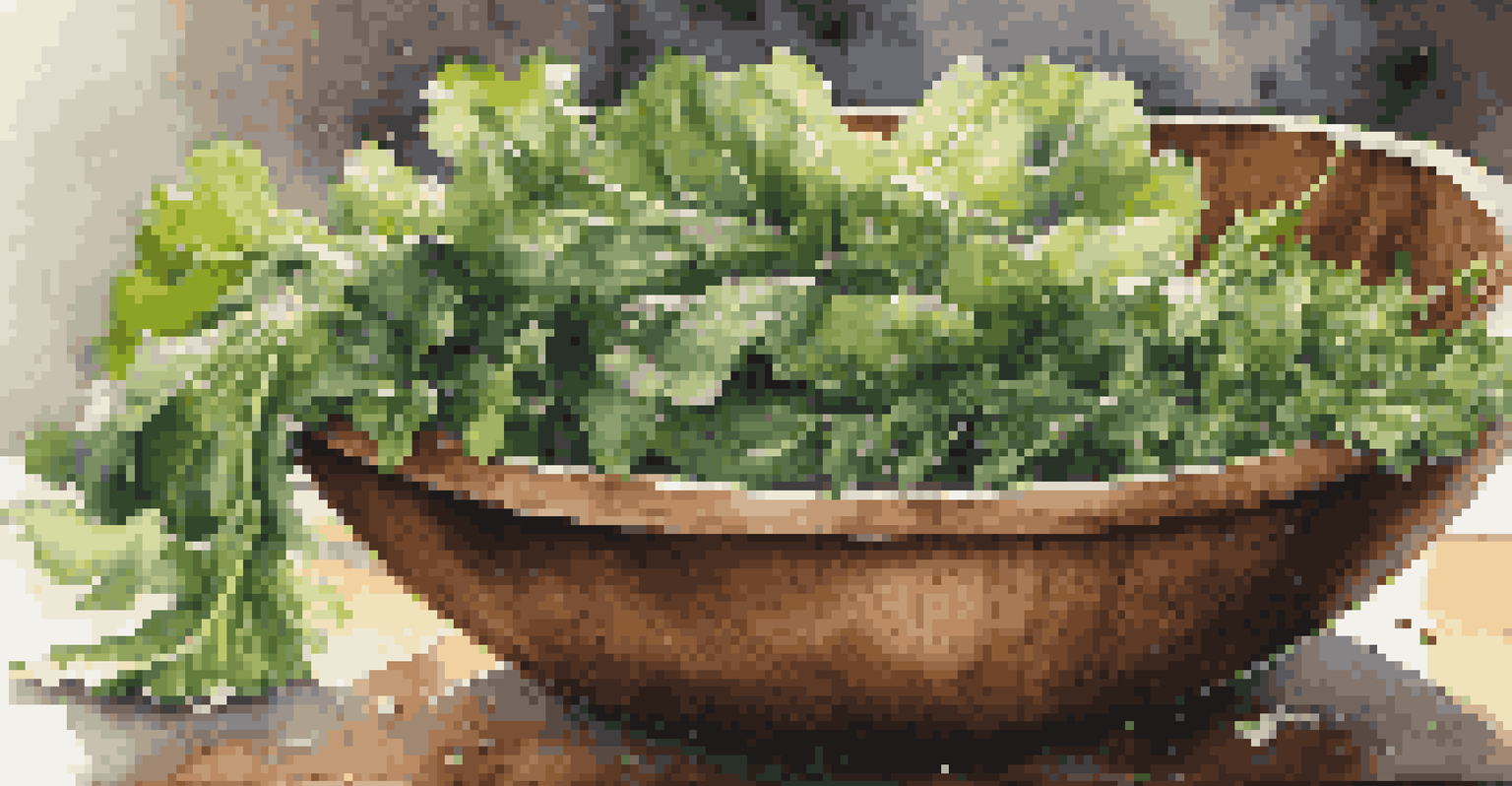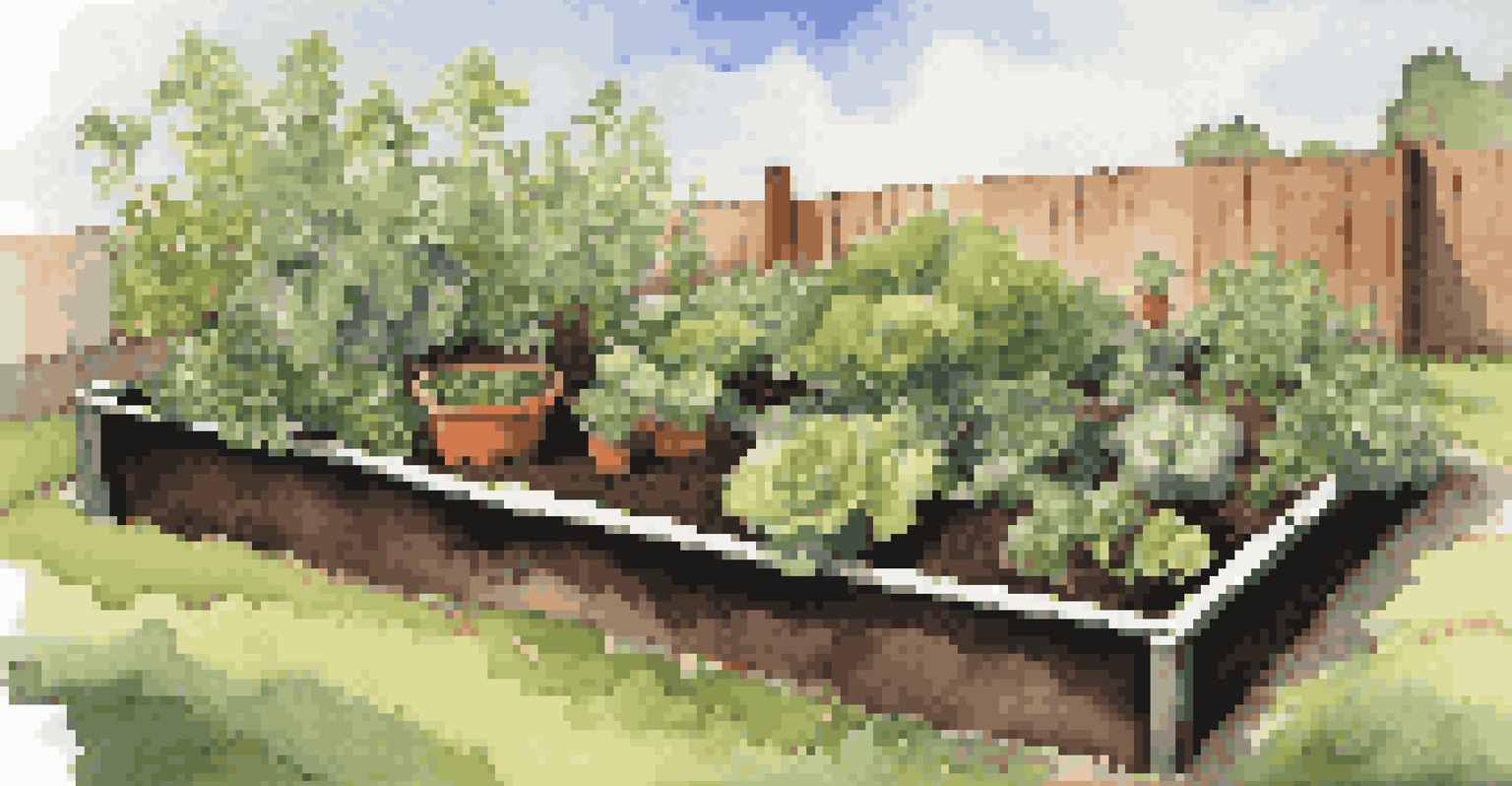Growing Your Own Salad: A Guide to Leafy Greens and More

The Benefits of Growing Your Own Salad Greens
Growing your own salad greens is not just a trend; it’s a rewarding experience. You control the growing conditions, ensuring your greens are fresh and free from harmful chemicals. Plus, there's something incredibly satisfying about picking your own produce right from your garden.
To plant a garden is to believe in tomorrow.
Imagine stepping outside and harvesting crisp lettuce or vibrant spinach for your lunch. It’s a simple pleasure that connects you to your food and the earth. Beyond the taste, homegrown greens often pack more nutrients than store-bought varieties, as they can be eaten shortly after harvesting.
Not to mention, gardening can be a fantastic stress reliever. It offers a chance to unplug from the digital world and immerse yourself in nature, which can boost your mood and overall well-being.
Choosing the Right Location for Your Greens
The location of your garden plays a critical role in the success of your leafy greens. Most salad greens thrive in a spot that receives at least six hours of sunlight daily. However, if you live in a particularly hot area, a bit of afternoon shade can help prevent your greens from wilting.

Consider accessibility as well. Choosing a location close to your kitchen means you can easily grab fresh ingredients while cooking. Raised beds or containers can also be a great option, allowing you to control soil quality and drainage more effectively.
Grow Fresh Greens at Home
Cultivating your own salad greens ensures freshness, superior flavor, and a connection to your food.
Lastly, think about wind protection. If your garden is in a breezy area, using a windbreak can help shield your greens from damage and dehydration, ensuring they grow strong and healthy.
Selecting the Right Leafy Greens for Your Garden
When it comes to salad greens, variety is the spice of life! Popular choices include lettuce, spinach, arugula, and kale. Each offers its own unique flavor profile and nutritional benefits, so consider what your taste buds enjoy most.
Gardening adds years to your life and life to your years.
You can also experiment with different types of greens, such as mustard greens or Swiss chard, to add a bit of zest to your salads. Mixing colors and textures not only makes your plate more visually appealing but also enhances the nutritional value of your meals.
Remember to consider your growing season too. Some greens grow better in cooler temperatures, while others thrive in warmer weather. Researching your local climate can help you choose the best varieties for your garden.
Preparing Your Soil for Optimal Growth
Healthy soil is the foundation of a successful garden. Start by testing your soil's pH and nutrient levels, which can help you determine what amendments might be necessary. Most salad greens prefer slightly acidic to neutral soil, around a pH of 6.0 to 7.0.
Amending your soil with organic matter, like compost, can boost its fertility and improve its structure. This not only provides essential nutrients for your plants but also enhances drainage and moisture retention, creating an ideal growing environment.
Choose the Right Growing Spot
Selecting a well-lit, accessible location with wind protection is crucial for thriving salad greens.
When planting your seeds or seedlings, make sure to space them properly. Crowding can lead to competition for nutrients and water, resulting in weaker plants. Follow the guidelines on seed packets to ensure your greens have enough room to flourish.
Watering and Caring for Your Salad Greens
Consistent watering is key to growing vibrant and delicious salad greens. Aim to keep the soil evenly moist, but not soggy. A good rule of thumb is to water deeply once or twice a week, depending on your climate and soil type.
Pay attention to the weather; if it’s particularly hot or windy, your greens may need more frequent watering. Using mulch can help retain soil moisture and reduce the frequency of watering, making your garden maintenance easier.
Additionally, keep an eye out for pests and diseases. Regularly inspecting your plants can help you catch any issues early on, allowing you to take action before they become significant problems.
Harvesting Your Greens for Maximum Freshness
Harvesting is one of the most exciting parts of growing your own salad greens! Timing is essential; for leafy greens, the best practice is to pick them in the morning when the leaves are crisp and full of moisture. This ensures optimal freshness and flavor.
You can start harvesting once the leaves are large enough to eat, usually when they’re about 4 to 6 inches long. For many varieties, cutting the outer leaves while allowing the inner ones to continue growing can provide a continuous harvest throughout the season.
Harvest for Peak Freshness
Picking greens in the morning and handling them gently maximizes their flavor and quality.
Remember to handle the greens gently to prevent bruising. Rinse them thoroughly before using, and enjoy the satisfaction of knowing you grew them yourself!
Storing and Enjoying Your Homegrown Greens
Proper storage is essential to maintain the freshness of your homegrown salad greens. After washing, dry them thoroughly using a salad spinner or a clean kitchen towel. Excess moisture can lead to spoilage, so it's crucial to remove as much water as possible.
Store your greens in a breathable container, such as a perforated plastic bag or a container lined with paper towels. This helps regulate moisture levels and keeps your greens crisp for longer.

Now comes the fun part: enjoying your homegrown salad! Toss them with your favorite dressings, add some nuts or cheese for texture, or simply enjoy them with a drizzle of olive oil and a sprinkle of salt. The possibilities are endless!